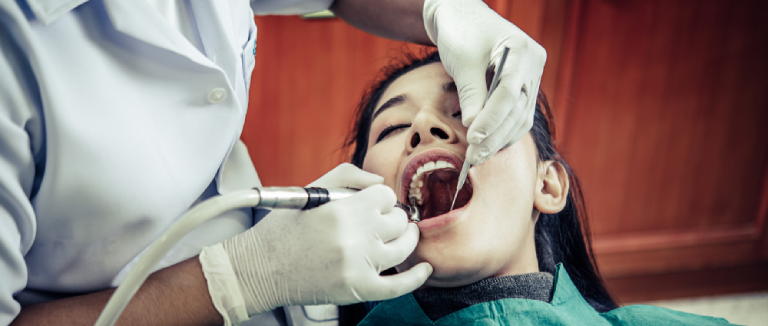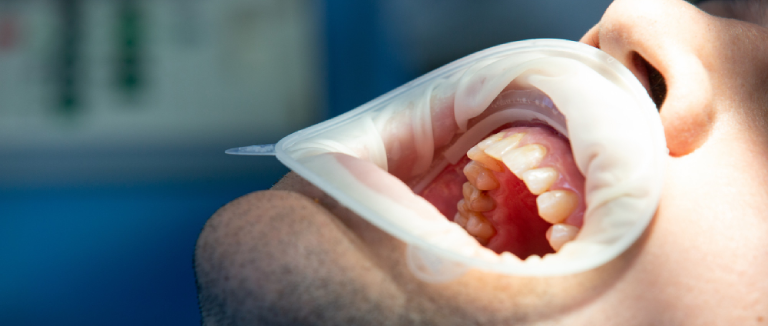Dental Cysts: Types, Symptoms, and Effective Treatment Options
Dental or odontogenic cysts are fluid-filled sacs within the jawbone or around tooth roots. While most of them are benign, the consequences of untreated dental cysts can be far-reaching, affecting adjacent teeth, bone structure, and overall oral well-being. This comprehensive guide aims to shed light on the various types of dental cysts, their symptoms, potential risks, and the significance of timely diagnosis and treatment. Join us on this educational journey to raise awareness and gain valuable insights into managing dental cysts effectively.

What is a Dental Cyst?
A dental cyst, also referred to as an odontogenic cyst, is a sac packed with fluid that forms inside the jawbone or around tooth roots. These cysts originate from tissues associated with tooth development. Certain cells in the tissues of the mouth may become caught when teeth develop and expand, resulting in fluid collection and cyst formation. The connection between dental cysts and tooth development highlights the developmental nature of these cysts. Unlike other oral conditions, dental cysts specifically emerge during tooth formation. Although most dental cysts are benign, their growth can exert pressure on nearby structures, causing pain, swelling, and potential damage to teeth and bone.
Don't let Dental Cyst steal your smile. You can discover empathetic care and advanced treatments at Liv Hospital in Turkey. You may visit us to learn how we can help restore your oral health.
Are Dental Cysts Dangerous?
Dental cysts, in general, tend to be benign, meaning they are not cancerous. This in no way minimizes the importance of their existence in the mouth. Although many dental cysts don't bring about instant adverse effects, they can progress to complications if left untreated. Dental cysts can exert pressure on neighboring teeth and the jawbone as they grow, potentially causing pain, swelling, tooth displacement, or bone damage. In severe cases, untreated cysts can lead to infections that may spread to other parts of the face and neck. Regular dental check-ups and X-rays are crucial in identifying dental cysts early, allowing for prompt intervention and reducing the risk of further complications.
Your oral health matters to us. You can explore Liv Hospital's expertise in treating Dental Cysts in Istanbul, and let us provide the understanding and care you deserve.
Dental Cyst on Gum
Dental cysts on the gums can develop due to various factors. These cysts often arise from the remnants of dental tissue left behind during tooth development. These fragments can form a cyst when trapped in the gum tissue. Additionally, cysts may develop around the neck of an impacted tooth, where the tooth attempts to erupt but becomes obstructed, leading to fluid accumulation and cyst formation. Identifying symptoms that may indicate the presence of a gum cyst is crucial. These may include localized swelling, tenderness, a small lump or bump on the gum, and discomfort while chewing or speaking.

Dental Cyst Symptoms
Recognizing the symptoms associated with dental cysts is crucial for early detection and timely intervention. Common symptoms of dental cysts include persistent pain or discomfort in the affected area, localized swelling, tenderness to touch, and a noticeable lump or bump on the gums or jaw. Dental cysts associated with non-vital (dead) teeth may cause no pain initially but can lead to swelling and inflammation over time. On the other hand, cysts around impacted teeth might cause visible swelling and difficulty in fully opening the mouth. Regardless of the specific symptoms, prompt recognition is essential to prevent potential complications and ensure effective treatment.
At Liv Hospital, we listen to your concerns and design personalized treatment plans. You can contact us in Turkey for information and guidance on your Dental Cyst treatment journey.
Dental Cyst Typ
Dental cysts encompass various types, each with distinct characteristics and developmental origins. Radicular cysts, also known as periapical cysts, form at the root tip of a non-vital tooth, often due to an infected pulp. Dentigerous cysts, or follicular cysts, develop around the crown of an unerupted tooth, resulting from fluid accumulation between the tooth and its dental follicle. Odontogenic keratocyst (OKCs) are less common but possess a higher potential for recurrence, affecting the jawbone and displaying aggressive growth. Dental lamina cysts, also called gingival cysts of the newborn, occur in infants due to epithelial remnants from tooth development.
Dealing with Dental cysts may raise questions and concerns, and that's completely normal. You can trust Liv Hospital's compassionate experts in Istanbul to address your worries and provide the support you need.
Dental Lamina Cysts
Dental lamina cysts, also known as gingival cysts of the newborn, are intriguing anomalies that occur in infants during tooth development. These cysts originate from epithelial remnants left behind by the dental lamina, a structure crucial for tooth formation in the early stages of fetal development. Dental lamina cysts often manifest as small, painless bumps on the gums of newborns. While their appearance may cause concern to parents, it's important to note that these cysts are generally harmless and self-limiting. Dental lamina cysts usually undergo spontaneous resolution without intervention or treatment.

Dental Cyst Treatment
Treating dental cysts involves various approaches, depending on the cyst's type, size, and location. Observation and monitoring are often employed for small, asymptomatic cysts that do not pose immediate risks. In cases of larger cysts causing discomfort or swelling, drainage, and aspiration may be performed to relieve pressure temporarily. Enucleation, a surgical procedure, is commonly used to remove the cyst and surrounding tissues altogether. Marsupialization creates an opening in the cyst, allowing continuous drainage to promote healing.
Tooth extraction may be necessary for impacted or severely damaged teeth related to the cyst. Medications like antibiotics can aid in managing infections. Each treatment option serves a specific purpose, and the dentist or oral surgeon determines the most suitable approach based on individual circumstances to ensure effective management of dental cysts.
Liv Hospital - Shaping Healthy Smiles!
Understanding dental cysts and their impact on oral health is essential for maintaining a healthy, pain-free smile. While most dental cysts are benign, they should not be ignored if left untreated, they can cause complications that affect the teeth, gums, and surrounding tissues. Regular dental check-ups are vital for early detection and timely treatment, helping to prevent more serious oral health issues. If you experience discomfort or suspect a dental cyst, don’t hesitate to consult a dental professional.
For those seeking high-quality dental care in Turkey, Liv Hospital stands at the forefront of modern medicine. Guided by its “Leading International Vision” philosophy, Liv Hospital combines advanced technology, expert specialists, and patient-centered care to help shape the future of your oral health.
* Liv Hospital Editorial Board has contributed to the publication of this content .
* Contents of this page is for informational purposes only. Please consult your doctor for diagnosis and treatment. The content of this page does not include information on medicinal health care at Liv Hospital .
For more information about our academic and training initiatives, visit Liv Hospital Academy
Frequently Asked Questions
What are the common types of dental cysts?
The main types include radicular (periapical) cysts, dentigerous (follicular) cysts, odontogenic keratocysts, and dental lamina (gingival) cysts. Each type has distinct causes and affects different areas of the jaw or gums.
What are the symptoms of a dental cyst?
Symptoms may include swelling, tenderness, pain, or a lump on the gums or jaw. Some cysts may remain painless until they grow larger or become infected.
Are dental cysts dangerous?
Most dental cysts are benign, but untreated ones can cause serious complications, including bone loss, infection, tooth displacement, or jaw damage. Early diagnosis prevents these outcomes.
How are dental cysts diagnosed?
Dental cysts are often detected through dental X-rays or 3D scans during routine checkups. In some cases, further imaging or biopsy may be required to confirm the diagnosis.
What treatment options are available for dental cysts?
Treatment may include surgical removal (enucleation), drainage, marsupialization, or extraction of affected teeth. The approach depends on the cyst’s size, type, and location.
Can dental cysts go away on their own?
No. While some small cysts may remain stable for a while, most require dental evaluation and treatment to prevent infection or structural damage.
Why choose Liv Hospital for dental cyst treatment?
Liv Hospital offers expert oral and maxillofacial surgeons, advanced diagnostic imaging, and personalized care plans—ensuring precise diagnosis, effective treatment, and optimal recovery in Turkey.
